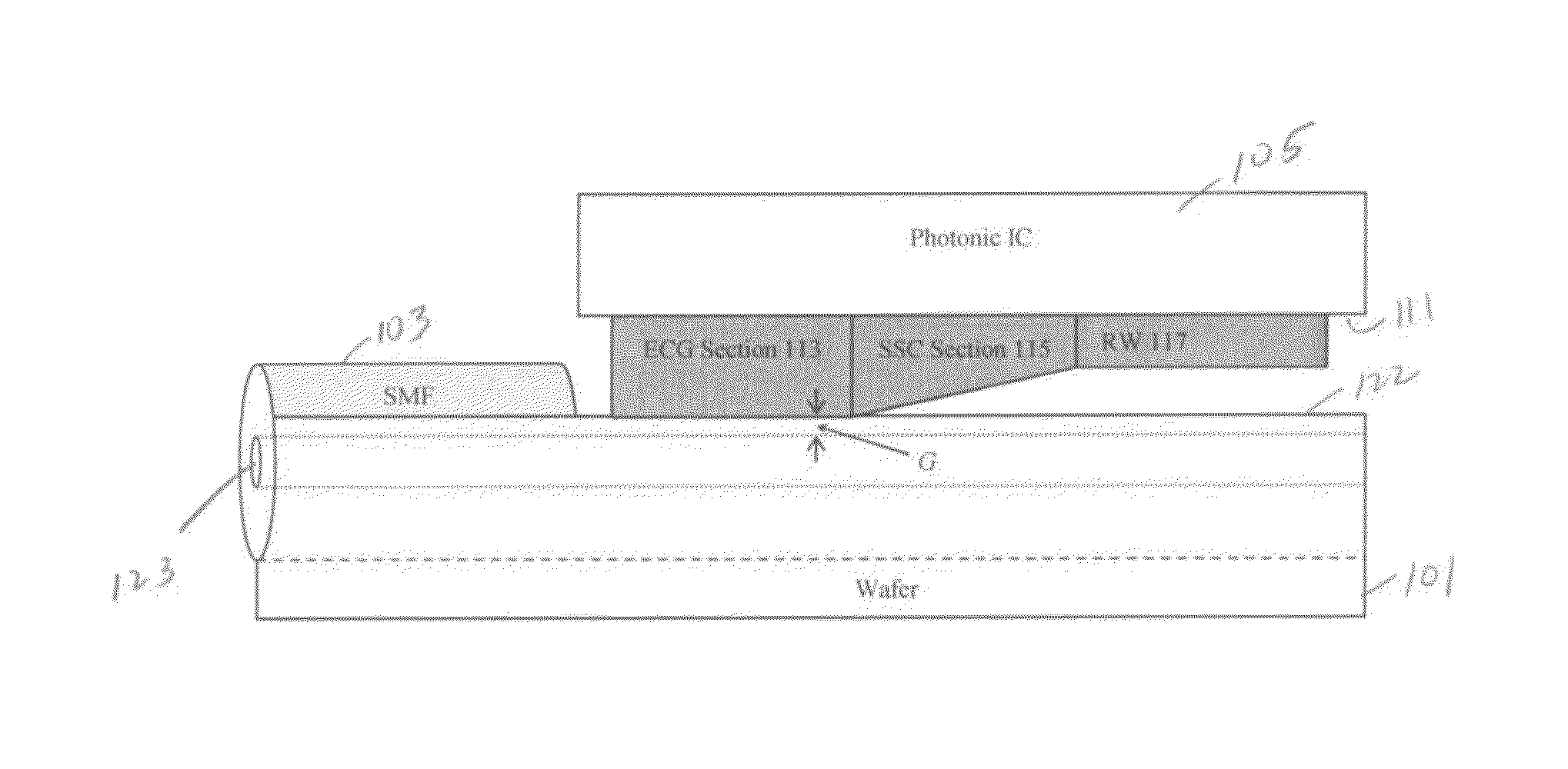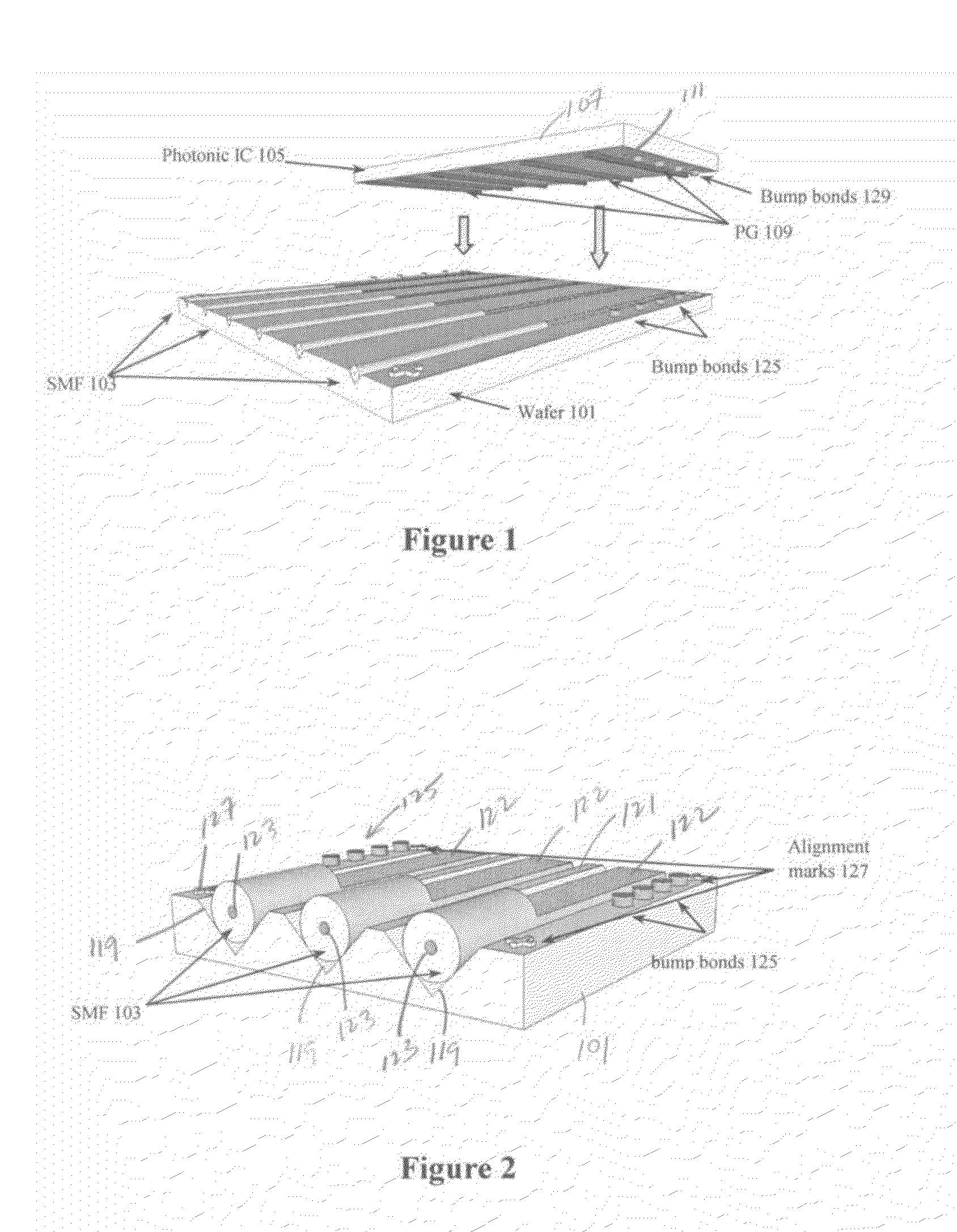Fiber Optic Coupler Array
a fiber optic coupler and array technology, applied in the field of waveguide can solve the problems of not being suitable for large-spectral bandwidth optical coupling, putting a stringent demand on the alignment of fiber both vertically and the input and output couplers
- Summary
- Abstract
- Description
- Claims
- Application Information
AI Technical Summary
Benefits of technology
Problems solved by technology
Method used
Image
Examples
Embodiment Construction
[0027]FIG. 1 illustrates a fiber optic coupler array 100 according to the present application. The coupler array 100 includes two parts: a wafer 101 that mechanically supports a plurality of single-mode optical fibers (SMFs) 103; and a photonic integrated circuit (IC) 105 with active electro-optical components that are operably coupled to the SMFs 103 supported by the wafer 101. The SMFs 103 can extend beyond the periphery of the wafer 101 for connection to other network components as needed. The photonic IC 105 is configured in an inverted configuration (with the substrate 107 up) with on-chip passive semiconductor waveguides (PG) 109 integral to its top surface 111 (opposite the substrate 107). Each PG 109 is configured such that is in intimate contact with a corresponding SMF 103 in which the fiber cross-section has been suitably modified to provide evanescent-wave coupling between the SMF 103 and the PG 109. As best shown in FIGS. 3 and 6, each PG 109 includes an evanescent coup...
PUM
 Login to View More
Login to View More Abstract
Description
Claims
Application Information
 Login to View More
Login to View More - R&D
- Intellectual Property
- Life Sciences
- Materials
- Tech Scout
- Unparalleled Data Quality
- Higher Quality Content
- 60% Fewer Hallucinations
Browse by: Latest US Patents, China's latest patents, Technical Efficacy Thesaurus, Application Domain, Technology Topic, Popular Technical Reports.
© 2025 PatSnap. All rights reserved.Legal|Privacy policy|Modern Slavery Act Transparency Statement|Sitemap|About US| Contact US: help@patsnap.com



